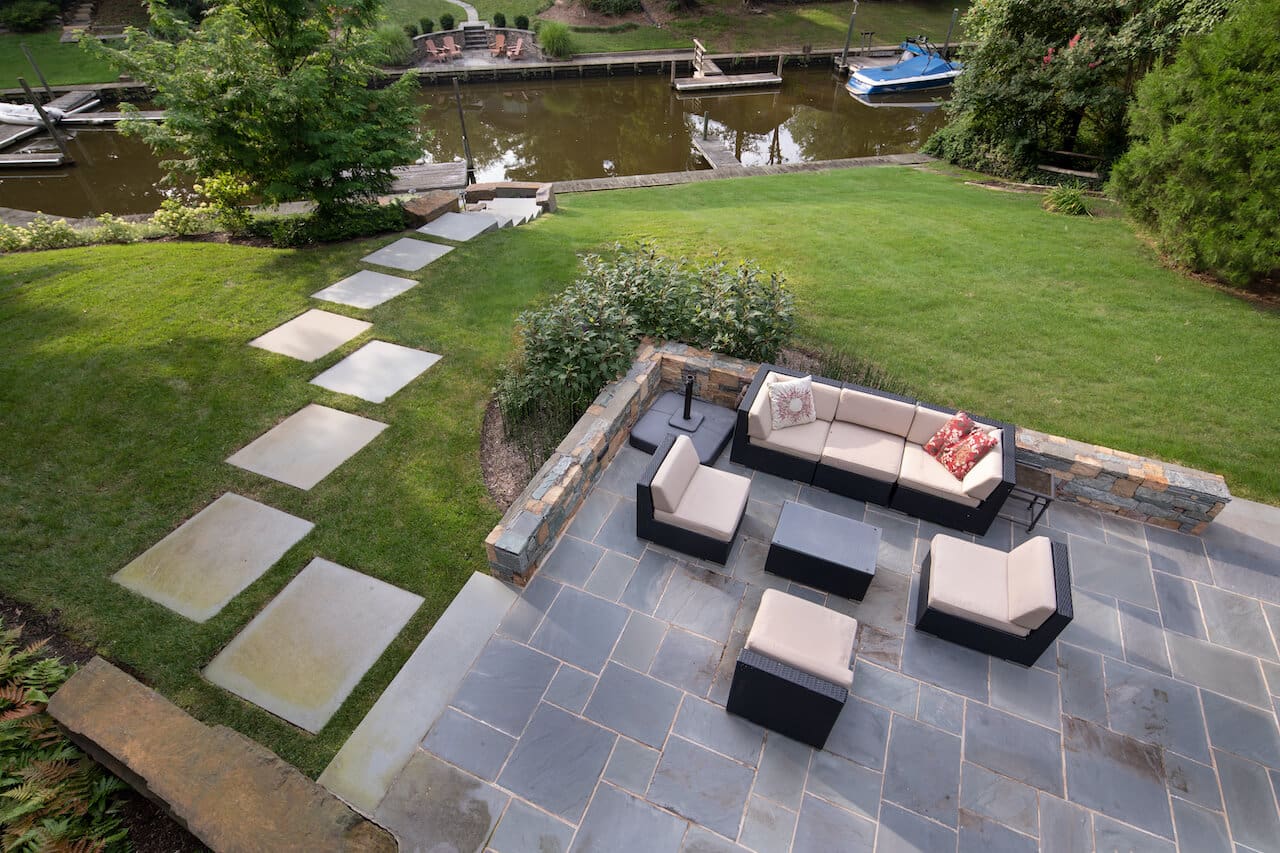
To plan a landscape that is expressive and full of variety throughout the growing season, you’ll need to spend some time studying how sun, shade, and moisture affect different areas of your yard. Some areas will receive full sun while others spend the day primarily in shade. You’ll want to be sure that your planting plan is based on an understanding of the sunlight and watering needs of each plant and when the best time is to plant them.
Plants have distinct preferences and will flourish in places in your yard that are similar to where they grow in natural habitats and at the times of the year where they are at their peak. And as your yard matures, changes will occur. Working with a garden management professional to develop a comprehensive planting plan is the best way to achieve a landscape that evolves beautifully over seasons and years.
Plan a Landscape That Specifies Sun and Shade Plants
It’s not enough to simply select plants you like, or even to select plants best suited to your growing region. Plants adapt to grow in a particular environment of either sun, shade, or partial light. When you plan a landscape, it is helpful to think of mimicking the ideal conditions found in the wild to achieve the best results in a home garden environment.
Sun Lovers
Because they are naturally comfortable in an open field type environment, sun-loving plants will thrive in the places in your garden where there is no shade. A plant that favors full sun conditions needs, at the very least, six to eight hours of direct sunlight each day. Some excellent sun lovers to include in your landscape plan are:
- perennials like coreopsis, salvia, and blanket flower
- grasses like panicum, miscanthus, and calamagrostis
- ground cover like mondo grass, winter jasmine, and carpet bugleweed
- shrubs like fothergilla, diablo ninebark, and oakleaf hydrangea
Shade Plants
A true shade plant loves a dense canopy and needs only indirect, dappled sunlight throughout each day. Because they can photosynthesize without direct sunlight, they don’t need sustained sunlight. In fact, direct sunlight will burn them. Some excellent shade lovers to include in your landscape plan are:
- perennials like hostas, astilbe, and ferns
- grasses like carex, tufted hair grass, and Japanese forest grass
- ground cover like pachysandra, sweet woodruff, and wild ginger
- evergreen shrubs like American holly, American boxwood, and Carissa holly.
Partial Shade Plants
Most plants fit into this category. They need three to six hours of direct sunlight each day, and they do best with softer morning light, as afternoon light can be too intense for them. When planted in the right place, such as in a spot where a tree or other larger plant (or your house) will shield them in the hottest hours of the day, partial shade plants will flourish.

Moisture Needs for Sun and Shade Plants
When you plan a landscape for sun and shade, it is also important to be aware of the moisture needs of specific plants. Some sun plants—like ornamental grasses that are native to open meadows and prairies— can tolerate drought conditions, while others are adapted to sit in water and be wet all the time. Irises, for example, love the light but grow well on the shores of lakes and ponds, right near or in the water.
Many shade lovers—such as cardinal flower, astilbe, aruncus (goat’s beard)— thrive in a swamp and need moisture all the time, while other shade plants, such as azaleas, require very good drainage.
A landscape professional will help you work with the sun, moisture, and drainage conditions in your yard and will select plants that are best suited for your particular environment—or modify the landscape to make room for your favorites to blossom.
When and Where to Plant

Your yard will change throughout the growing season. Trees will leaf out and throw shade during the summer where there was full sun in the spring. When you plan a landscape, it is critical to employ landscape layering to ensure variety and color year-round.
Likewise, should you lose or remove a tree, you’ll have abundant sunshine now on the plants that grew beneath its protective canopy. So, a shade garden full of hostas and ferns will wilt by midsummer when it catches sustained afternoon rays.
Begin your project with a dream and a plan!
You are at the threshold of an exciting journey. This eBook will provide sound guidance as you take your first steps.
Though there are always exceptions, planting should generally happen in the spring or fall. Trees should go in after they have gone dormant in the fall or in the spring before they leaf. Perennials are best planted in fall because they keep growing during the winter unless there is a deep frost; this allows them to develop a healthy root system and be ready for the following spring. There are exceptions to this, such as warm-season or ornamental grasses, which will rot if they are placed in cool soil.
Plan for the Effects Sun and Shade in Your Yard
There are many factors to consider when developing a landscape plan. But, time spent carefully thinking about the amount of sunlight and water available in each part of your yard and the best time of year for planting will result in a beautiful, multi-season landscape that reflects your individual tastes and is in keeping with the way you use your space through spring, summer, and fall.
A landscape professional with solid horticultural training and experience can help you plan a landscape that nurtures your yard into its full glory and rewards you with stunning displays all year long.
Perhaps you’ve been wondering how to bring out the fullest expression in your landscape and gardens. Our eBook: Choosing the Right Kind of Landscape Maintenance Firm, is full of valuable information to help you understand the fundamental differences between landscape maintenance companies.